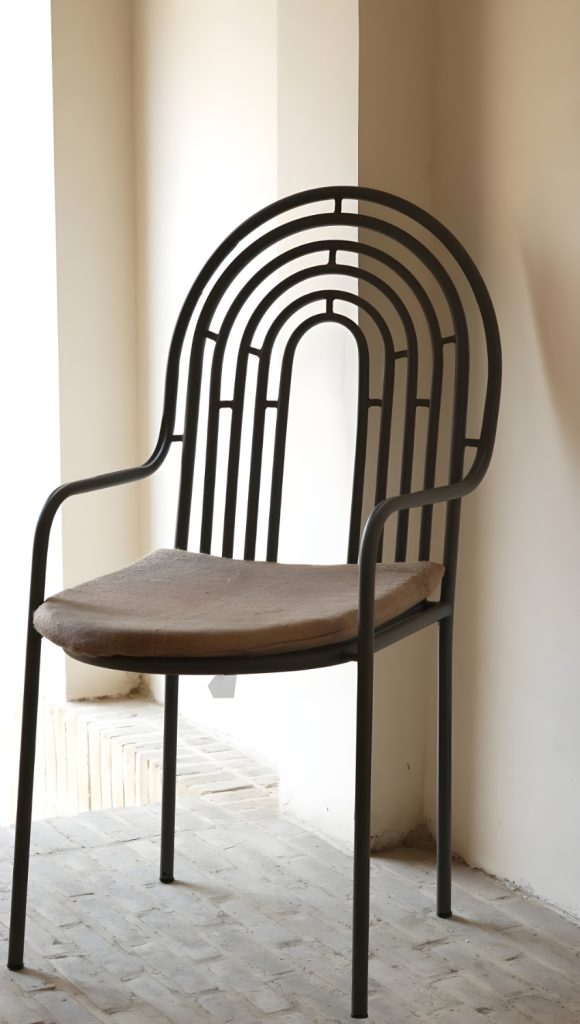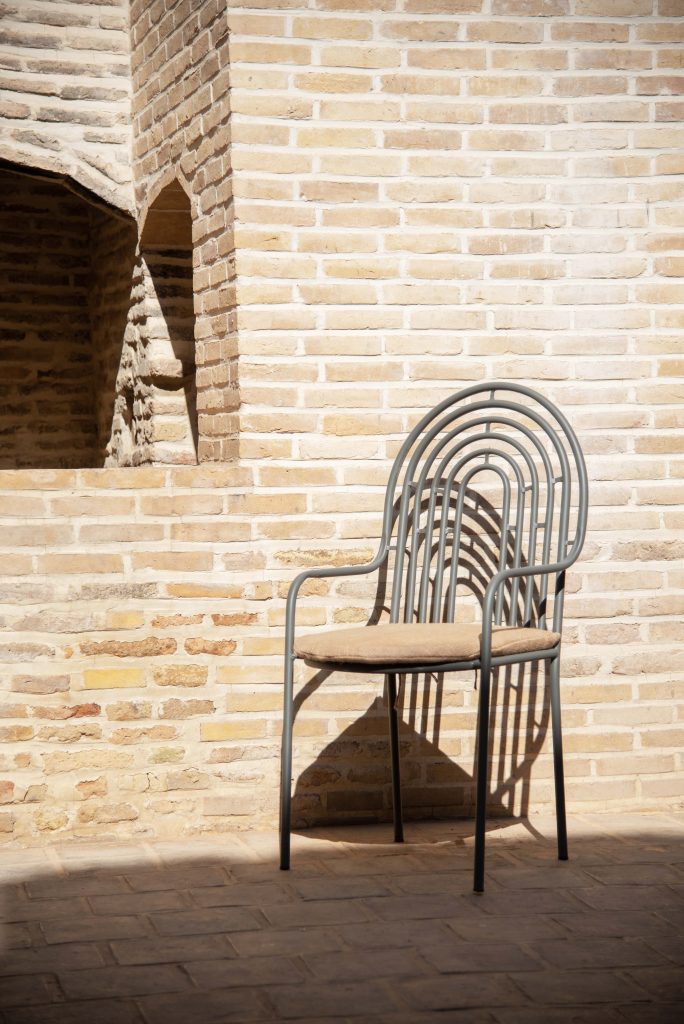The D sign seat is not just another chair. It’s a concentrated statement of industrial design: a product that balances engineered performance with a strong visual identity, and it earned international recognition when it won an IDA award. In this in-depth blog post we’ll follow the D sign seat from first spark to finished product, explore the mindset of its designer — Ardeshir Ghanei — and examine why this chair belongs at the intersection of craft, ergonomics, and scalable production. The entire focus here is the product: its concept, its evolution, its performance and how it speaks to both users and the wider design community.

Why the D sign seat matters
Great product design solves real human problems while delivering a memorable sensory and emotional experience. The D sign seat matters because it manages to feel both rigorously engineered and visually expressive — a rare balance. It rethinks the ergonomics of sitting without resorting to purely functional aesthetics, and its IDA recognition signals that juries saw both technical merit and cultural relevance in its design.
The designer’s mindset: how Ardeshir Ghanei approached the brief
Ardeshir Ghanei approached the project with two guiding principles: respect for the human body, and respect for the production process. His mindset combined curiosity about human behaviour with a pragmatic understanding of manufacturing constraints. Rather than treating limitations as hindrances, Ghanei used them as creative boundaries: weight targets, material availability, assembly constraints and sustainability goals shaped the design language. The result is a product that reads as honest — what you see is function expressed elegantly.
Research & discovery: what questions drove the project
The team started with core research questions:
- How do people sit differently across contexts (brief rest, focused work, social interaction)?
- What pressure points appear with extended sitting, and how can geometry reduce them?
- Which materials provide the best trade-offs between comfort, durability and recyclability?
- Where is there an unmet need in contemporary interior and contract furniture?
Answers to these questions generated the behavioural and performance brief that guided every subsequent decision.

Concept development: sketches, rules and the emergence of form
Concept development was iterative and idea-rich. Early phases emphasized rapid sketching and physical exploration: dozens of quick concepts explored different relationships between shell, frame and support. From these explorations Ghanei distilled a set of formal rules — tension lines, open volumes, and a clear structural logic — that gave the chair its recognizable silhouette. The design language emerged from the interplay of negative space and load-bearing geometry, producing a visual identity that communicates both lightness and structural intent.
Engineering and digital optimization: designing for performance
Moving from sketches to a functioning object required digital tools. Parametric modelling and structural simulation helped test load paths and optimize thicknesses so the seat could use less material while maintaining strength. Geometry was tuned to distribute pressure across the seat surface and control flex in predictable ways. This stage was essential to ensure the expressive form could also meet real-world performance and safety standards.
Materials strategy: choosing durability, feel and sustainability
Material selection was strategic: a lightweight metal frame combined with a molded seat shell that could accept different upholstery options. Options included a high-resilience foam core with technical fabrics for contract use, and a reinforced polymer shell for lighter, recyclable configurations. Material choices balanced tactile comfort, production cost, long-term durability and end-of-life separation for recycling.

Prototyping and ergonomic testing: evidence-based iteration
Prototyping was cyclical and evidence-driven. Physical mock-ups were tested with users in contexts that mirrored real use: co-working spaces, dining settings and lounges. User feedback focused on contact points, comfort over time, and perceived support. Each round of testing led to micro-adjustments — small angle changes, contour refinements, and ventilation details — that cumulatively transformed the prototype into a refined product.
Manufacturing & assembly thinking: design for production
From the outset the D sign seat was designed with manufacturability in mind. Connections were simplified to minimize fasteners and ease assembly, and the geometry was adapted to common tooling processes (bending, stamping, injection molding). The design team worked with fabricators to align tolerances, select appropriate surface finishes, and reduce waste during production. The aim was a design that looked premium but could be produced at scale without prohibitive costs.
Sustainability & lifecycle considerations
Sustainability was not an afterthought. The product’s lifecycle was considered at multiple levels: choice of recyclable materials, modular components that can be separated at end-of-life, and an optimized material footprint to reduce embodied carbon. Additionally, the chair’s durability reduced the likelihood of premature replacement — a key factor in product sustainability.
The significance of the IDA award for the product and the designer
Winning an IDA award elevated the D sign seat’s profile internationally. Awards like IDA provide peer recognition that validates design decisions and opens doors to industry buyers, galleries and premium retailers. For Ardeshir Ghanei, the award signaled that his approach — blending human-centred research, structural honesty, and production-aware design — resonated beyond local contexts and met rigorous international criteria.

User experience: how the D sign seat performs in daily life
A product is ultimately judged in daily use. The D sign seat was praised for:
- Comfortable micro-support that adapts to short bursts of activity and longer sitting periods.
- A visual identity that anchors interiors without dominating them.
- Practical performance in contract environments (easy maintenance, durable finishes).
These attributes make it versatile: suitable for boutique offices, hospitality settings and contemporary homes.
Market positioning and storytelling
Positioning the D sign seat involved telling a cohesive story: a chair born from research, refined by testing, and built with production intelligence. Marketing emphasized functional benefits (ergonomics, durability) alongside the emotional appeal of its form language. The IDA award became a central credential in communications, helping differentiate the product in a crowded marketplace.

Lessons for designers and product teams
The D sign seat’s development highlights several transferable lessons:
- Use constraints as generative tools rather than obstacles.
- Ground aesthetic gestures in measurable user benefits.
- Iterate quickly with physical prototypes — the body remains the best test instrument.
- Engage manufacturers early to align design ambition with production reality.
- Design for lifecycle: durability, reparability and recyclability are competitive advantages.
Closing thoughts: a product-first legacy
At its core, the D sign seat is a product-first achievement: a chair whose formal language arose from technical clarity, human empathy and a disciplined design process. Ardeshir Ghanei’s mindset—respectful of human needs and appreciative of industrial realities—helped transform a bold concept into an award-winning product that performs where it matters most: in the hands and on the bodies of users.
More information:
https://www.idesignawards.com/winners/zoom.php?eid=9-52847-23
https://www.idesignawards.com/books/IDA2023-book-PRODUCT.pdf
https://hamrass.com/achievements/
https://www.archdaily.com/969005/dalan-jahan-boutique-hotel-polsheer-architects
https://www.designboom.com/architecture/neglected-heritage-building-iran-boutique-hotel-polsheer-architects-09-13-2021/
https://www.instagram.com/p/C_n9dqFN_Tl/
https://www.idesignawards.com/winners/directory.php?category=product




Pingback: International Design Awards (IDA) — From Entry to Victory - https://awardx.ir